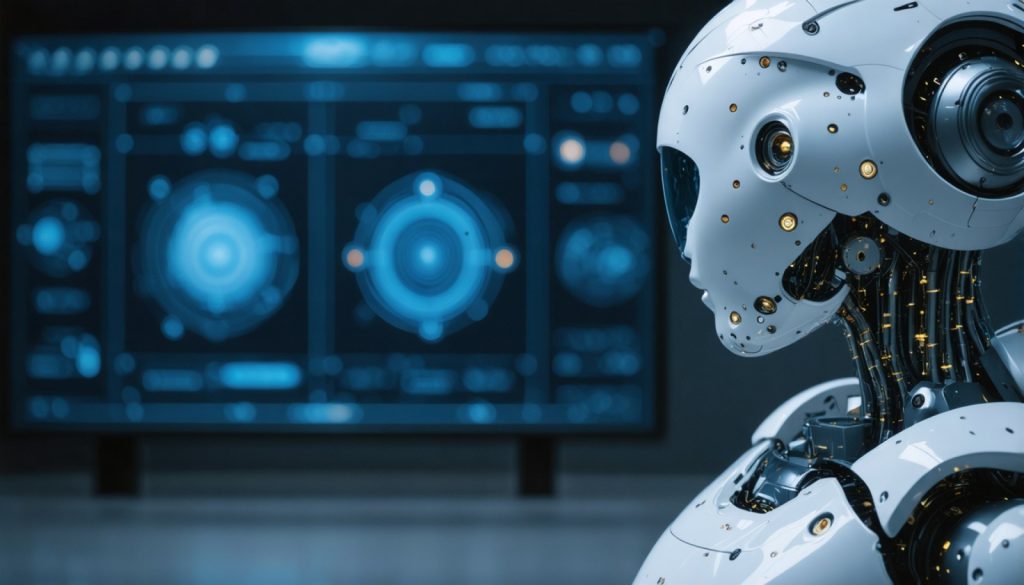
- The AI renaissance is defined more by human perception and trust in AI systems than by technological advances alone.
- Despite significant AI investments, actual returns are delayed by mistrust and alignment issues.
- The industry is in the “trough of disillusionment,” where initial excitement wanes, and demands for tangible results intensify.
- AI adoption is increasing (projected from 33% in 2023 to 71% in 2024), yet many companies see minimal profit impact, highlighting the “ambiguity effect.”
- Historical tech revolutions like the dot-com bubble mirror current challenges in AI adoption.
- Merging AI strengths with human creativity requires a cultural shift toward trust, beyond just technical solutions.
- Transparency in AI systems enhances trust, crucial across sectors like healthcare and finance.
- Future success lies in building trust frameworks alongside advanced AI technologies, promoting human-AI collaboration.
The world teeters on the verge of an AI renaissance, yet it’s not the technology sparking this pivotal change. Instead, it’s our own perceptions and trust—or lack thereof—in non-human decision-makers that herald this moment of truth. Despite the boom in artificial intelligence investment, evidenced by tech giants projecting over a trillion dollars on AI advancements, the wave of tangible results remains elusive, obscured by layers of mistrust and misalignment.
Over recent years, firms like Nvidia and Palantir ignited the imaginations of investors, boasting surging stock prices on the promise of revolutionary AI capabilities. Now, a sobering reality check sets in: enthusiasm alone does not equate to efficacy. The market finds itself navigating what industry leaders call the “trough of disillusionment,” a familiar phase where excitement fades, and the demand for evidence grows louder.
The crux of the challenge is not the tools but the humans who wield them. Despite a reported jump in companies adopting AI—from 33% in 2023 to a projected 71% in 2024—an overwhelming majority have yet to see any meaningful impact on profits. It’s a stark reminder from fields like behavioral economics of the “ambiguity effect” at play, where uncertainty breeds hesitance.
Consider past technology revolutions. The dot-com bubble demonstrated the pitfalls of speculation without substance. Similarly, the Human Genome Project and the fleeting hype around cold fusion offered promises of transformation that unfolded across decades, not overnight. The AI era might echo this pattern unless a critical component—trust—is woven into its core.
Missteps and false predictions have left many cautious. AI-human teams often underperform when forced into misaligned roles. AI capably identifies patterns, but humans navigate the uncharted territories of creativity and complex judgment. Merging these strengths requires more than a simple tech solution; it demands a cultural shift toward trust and collaboration.
To bridge the chasm between promise and fulfillment, companies must sculpt systems where AI’s “black box” becomes a transparent, synergistic tool augmenting human capability. Transparency breeds trust, as demonstrated by studies showing that even minimal control or input can dramatically improve stakeholders’ acceptance of AI systems.
Healthcare, finance, and government—sectors where stakes are highest—exemplify the trust barrier. The potential for AI to revolutionize diagnostics is clear, but progress stalls without the assurance of clear, explainable AI. Patients and professionals alike hesitate to trust a mechanic they cannot understand.
For investors, the real winners will likely be those companies investing not just in advanced algorithms but in building robust trust frameworks. This entails clear explanations, dependable construction, and consistent user agency—forming the foundation of sustainable, transformative AI applications.
Ultimately, the marketplace for AI is vast, filled with both peril and promise. Real innovation will stem from fostering human-AI collaborations, with systems engineered to enhance transparency and instill confidence. Success lies not in outpacing the next technological breakthrough, but in forging a path of trust and integration that guides us toward a future where AI is as reliable as it is revolutionary.
The Trust Factor: Why AI’s Potential Hinge on Human Confidence
Understanding the Current AI Landscape
Overview of AI Investments and Challenges: The AI industry is experiencing unprecedented investment, with projections exceeding a trillion dollars. Companies like Nvidia and Palantir have seen remarkable stock surges due to their AI potential. However, the technology’s tangible results remain elusive, largely due to widespread mistrust and misalignment between AI tools and human decision-making.
Key Insights and Analysis
1. The “Trough of Disillusionment”: This phase, familiar from past tech revolutions, highlights the gap between AI innovation hype and real-world applicability. Companies are eager to adopt AI, yet only a minority report profit impacts, pointing to the need for more evidence and success stories.
2. Historical Context and Lessons Learned: Like the dot-com bubble, past technological leaps—from the Human Genome Project to cold fusion—teach us that genuine transformation takes time and is often met with exaggerated expectations at the start.
3. The Role of Trust and Transparency: For AI to reach its full potential, systems require transparency to foster trust. Industries such as healthcare, finance, and government bear the highest stakes, necessitating explainable AI to gain the trust of end-users.
4. Importance of Human-AI Collaboration: Merging AI’s efficiency in pattern recognition with human creativity and judgment can yield superior results. However, this requires cultural shifts towards collaborative, trust-based frameworks rather than mere technological upgrades.
How-To Steps for Building Trust in AI
1. Prioritize Transparency: Design AI systems with clear, explainable processes. Users should understand how decisions are made to feel confident in the outcomes.
2. Implement Feedback Loops: Allow users to provide input and control, fostering a sense of agency and improving acceptance of AI systems.
3. Focus on Communication: Maintain open channels for feedback and iteration between AI developers and users to address concerns and enhance usability.
Real-World Applications and Benefits
1. Healthcare: AI can revolutionize diagnostics by quickly analyzing vast datasets, yet trust must be established to ensure its integration into routine practice. Transparent algorithms and regulatory frameworks are crucial.
2. Finance: AI can offer tremendous predictive insights for market trends; however, clear guidelines and transparency can mitigate risks and encourage adoption.
3. Government: Intelligent automation offers efficiency gains, but transparency and accountability must underpin AI deployment in public services to avoid backlash.
Pros & Cons Overview
Pros:
– Efficiency: AI offers unparalleled data processing and pattern recognition capabilities.
– Innovation Potential: Huge potential to revolutionize industries by complementing human skills.
Cons:
– Mistrust: Lack of clarity in AI processes can hinder adoption.
– Misalignment: Without proper alignment, AI-human teams may underperform, leading to frustration and inefficiencies.
Predictions and Future Trends
1. Investment in Trust-building Technologies: Companies will likely focus on transparency-enhancing technologies and trust frameworks as key competitive differentiators.
2. Increasing Regulatory Interest: Governments may establish clearer guidelines for AI to safeguard privacy, security, and ethical considerations.
3. Skill Development and Training: Upskilling initiatives will be central to preparing the workforce for successful human-AI collaboration.
Actionable Recommendations
– Invest in User Education: Equip stakeholders with the knowledge to engage with AI confidently.
– Leverage Pilot Programs: Begin small with AI implementations, learn from initial tests, and build out larger integration efforts based on feedback.
– Foster Interdisciplinary Teams: Combine AI expertise with domain knowledge to ensure holistic development of AI solutions.
For more insights on AI and related innovations, explore the resources available at Nvidia and Palantir.
By focusing on transparency and human-AI cooperation, organizations can navigate current challenges and unlock the transformative potential of artificial intelligence.



